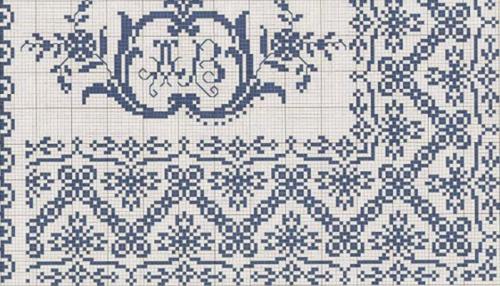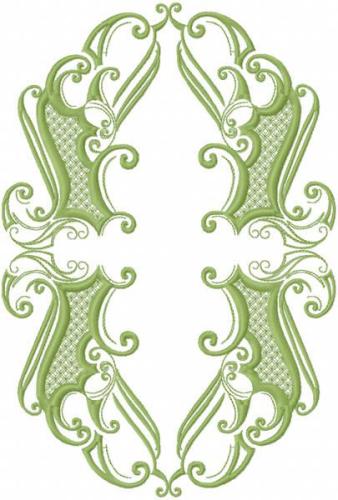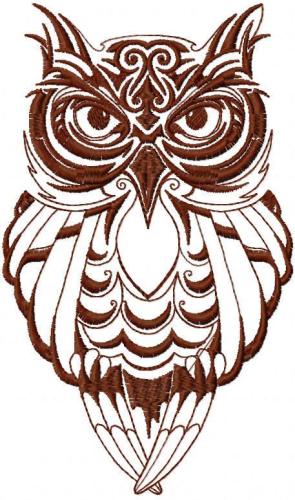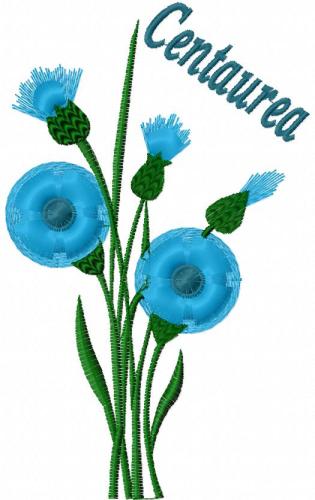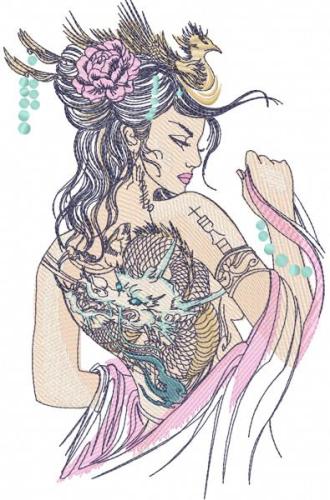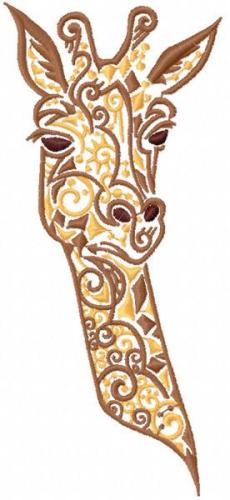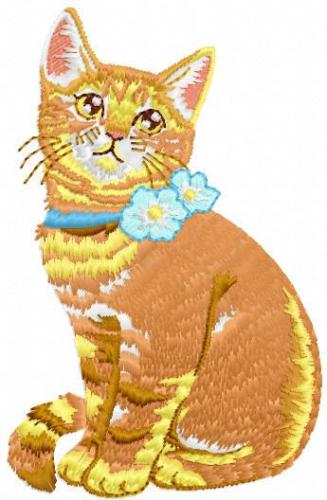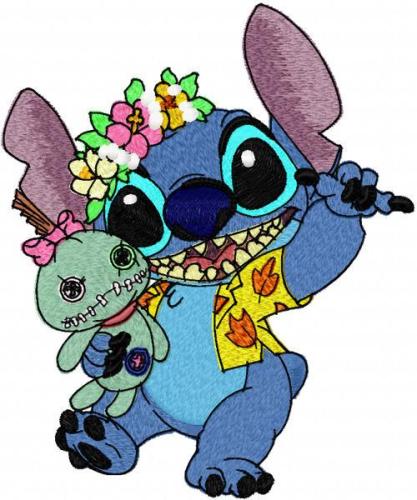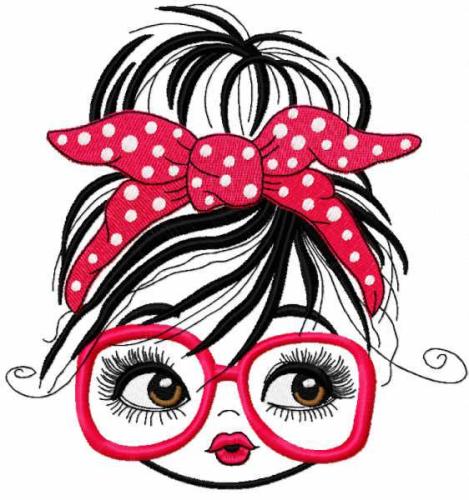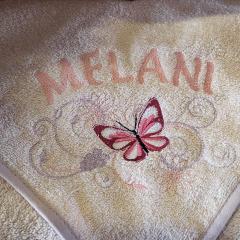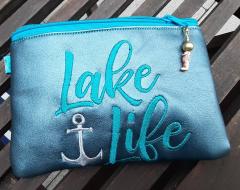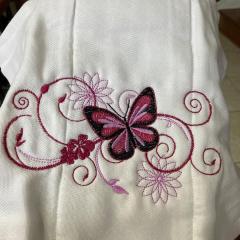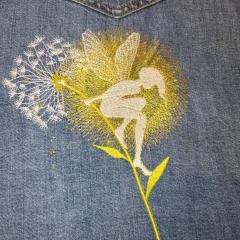
Original text by Marina Belova
At last, I put my hands on the pulled thread embroidery. Pulled thread technique intrigues me because you can help you achieve the effect of the hand embroidery. For example, these medallions used to decorate the edges of linen towels, tablecloths, pillows and other things in the household.
There were much more embroidered things in the past than there are nowadays:

The photo was taken from a book by Marsha L. Manchester called Antique Linens from the kitchen to the boudoir.
If you replace the Buratto technique, used for creating the background on the medallion, with the pulled thread work, it can make a wonderful present: "vintage" kitchen towels. You just need to learn to make Swiss lace in such a way that it would gather the fabric correctly.
I chose this design with a little kitchen hand for my sample, but decided to discard the flowers for now:

I decided to create the background motif stitch by myself, and with that purpose I drew this star and saved it as a motif in the editor:

I digitized the entire design after that:
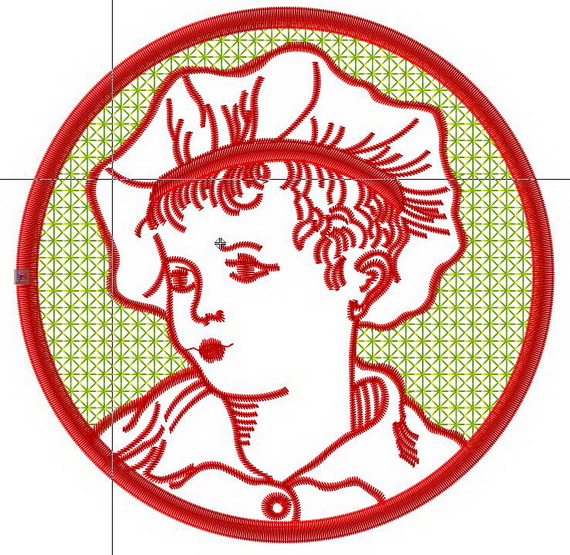
I had two colors in the file because the background (green) required a very thick needle, and there are no wing needles for commercial embroidery machines. I set #110. The rest of the design (red) was embroidered with the standard needle.
Little was left — to choose the right motif stitch size in the pattern and to find the right thread, which would gather the fabric as needed.
I embroidered the first sample with #30 cotton thread. The size of the motif stitch (the star) was 5 mm. I used no stabilizer. The fabric was not starched. I just hooped it, although I've seen the recommendations to use some kind of stabilizer (a tearaway or a water soluble one) for this kind of embroidery. This is what I got:
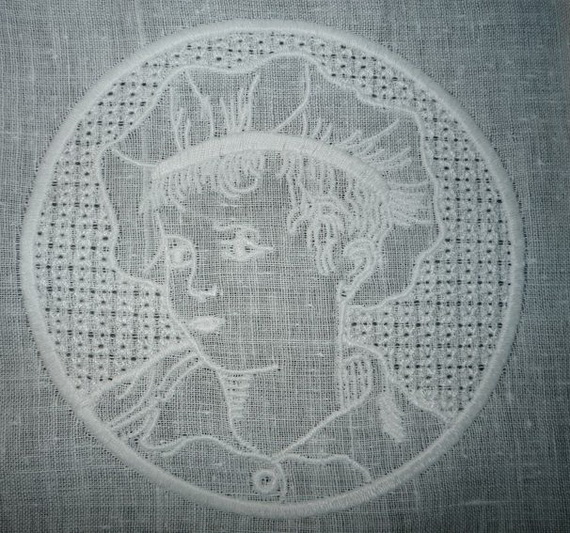
Thick cotton thread looks rather crude against the background, though it gathers the fabric correctly, making visible holes: Besides, the motif stitch seemed too high.
Therefore, I decided to change the background thread for the ordinary white polyester and leave the #30 cotton thread for the other elements. I used a very thin Guttermann #150 for the background. I often replace my bobbin thread with it. I changed the height of the gathering star to 4 mm so that the number of holes in the fabric increased.
The stitch count is rather high (13900) for such a 12.5x12,5 cm design. But it was worth it:
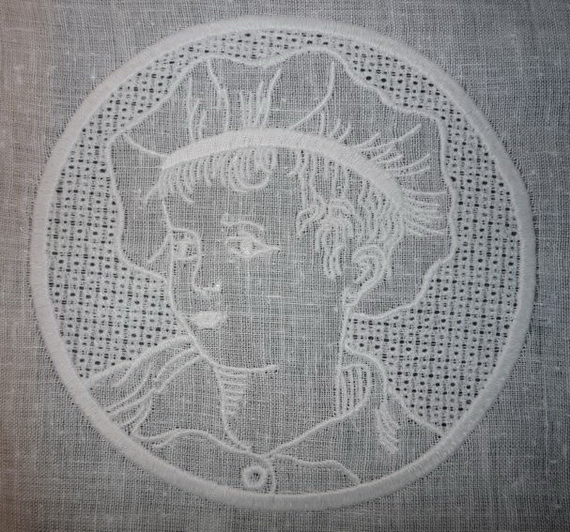
I increased the background thread tension greatly — screwed the nobs until tight, in order to gather the fabric more. But even with no stabilizer, the embroidery in this technique gives perfect results — nothing shifts, all the objects are where they should be.
The wrong side of embroidery is very neat, which brings me joy:

In my opinion, the motif stitch size should be lowered to 3-3.5 mm, so that the background of the medallion will look delicate. Especially if you create the interesting motif stitch and not a plain star. Everything was embroidered with very thin threads. If you use threads without luster on a good linen fabric of middle thickness, you may get a marvelous thing indeed, especially if you add some decorations apart from the motif stitching.
And the most important thing is that the design is very simple, without any special techniques or effects, except for the openwork. This means any embroiderer can do it, even a beginner.
Edited by Irina
-
 1
1
-
 1
1
-
 1
1


